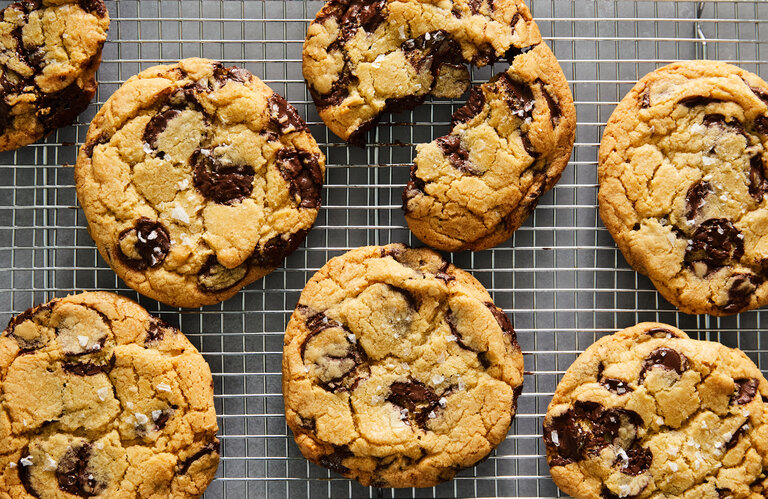Cookies are arguably one of the best parts of the holiday season. Soft and gooey, or crisp and crunchy, there’s a cookie out there for everyone. Cookies are also simple to make, only requiring a few basic ingredients and a short time in the oven. So how do these seemingly simple components combine to create the perfect cookie?
The secret behind the yumminess of a cookie lies in the chemical reactions that occur during the cooking process of being in the oven. When the cookie dough begins to heat inside the oven, the first change that takes place is butter melting. This causes the dough to lose structural integrity and spread out on the baking sheet. As the dough continues to heat up, the water inside starts to turn into steam, and the water vapor pushes against the inside of the dough, forcing the cookie to rise. The cookie will rise even more with the help of a leavening agent, baking soda or baking powder.
Baking soda and baking powder are composed of the same basic ingredient, sodium bicarbonate (NaHCO3), but baking powder also contains monocalcium phosphate (Ca(H2PO4)2). In the oven, baking soda reacts with an acid, such as buttermilk or brown sugar, and a liquid, to create carbonic acid (H2CO3). The carbonic acid further decomposes into carbon dioxide and water, which allows baked goods like cookies to rise. Baking powder essentially causes the same reaction, but monocalcium phosphate is acidic, meaning that only a liquid such as water or milk needs to be added to the mixture containing baking powder for the chemical reaction to take place. The carbon dioxide gas formed by leavening agents like baking soda and powder also creates little holes in the surface of the cookie, making it lighter in texture. Cookies can be made with either baking soda or baking powder, and sometimes even both depending on whether an acid is present within the dough. For example, chocolate chip cookies are often made with baking soda because the brown sugar used is slightly acidic, allowing baking soda to react with it during baking.
The flavor of the cookie is also developed in the oven, but as a result of two chemical reactions. First, caramelization occurs as sugars in the cookie dough break down and become volatile substances that are brown and fragrant, developing into flavors like butterscotch. The second process is called the Maillard reaction. This reaction is between sugars and amino acids from proteins, which bond together to create complex new structures that darken the appearance of the cookie and develop almost nutty flavors.
Knowing the basic chemical reactions that happen during cookie making allows food scientists to modify cookie recipes to achieve unique flavors and textures in specific cookies. For example, one can alter the texture and diameter of a cookie through the type of butter used. By using melted butter in the dough, the cookie will spread out more, resulting in a thinner and wider cookie. Furthermore, when butter melts, water within the butter is converted to gas, creating air pockets. This means that using melted butter to make cookie dough will create fewer air pockets, resulting in a chewier cookie. Similarly, changing the type of sugar can change the flavor of a cookie because of how different sugars participate in the Maillard reaction. Darker sugars like molasses and brown sugar contain glucose and fructose, and will make richer and more complex flavors than the sucrose in normal granulated sugar. These changes are visible across different types of cookies, like sugar cookies and chocolate chip cookies. Chocolate chip cookies have some amount of brown sugar, while sugar cookies don’t, hence the more caramelized and nutty flavor of a chocolate chip cookie.
Next time you bake cookies, try to experiment a little. Change the ratios of your ingredients to see and taste the results of chemistry in your kitchen!

